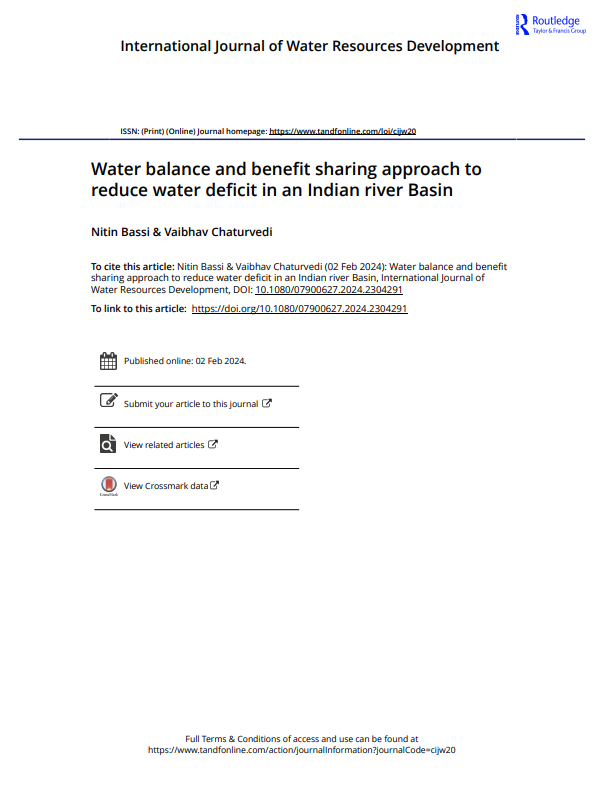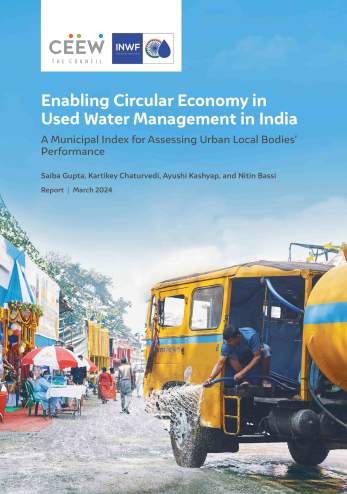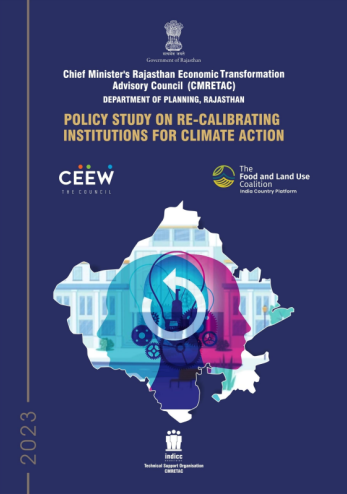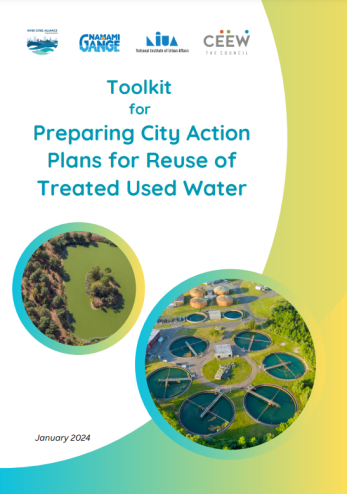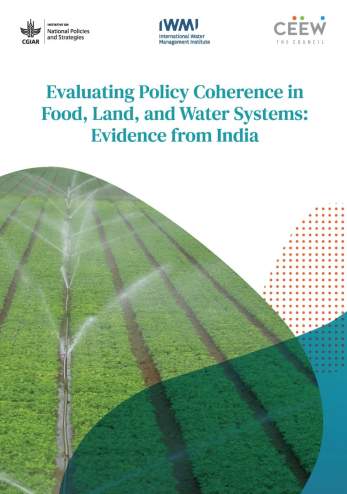Other Publications
Water Balance and Benefit Sharing Approach to Reduce Water Deficit in an Indian River Basin
Nitin Bassi and Vaibhav Chaturvedi
February 2024 | Sustainable Water
Suggested citation: Bassi, Nitin, and Vaibhav Chaturvedi. 2024. "Water Balance and Benefit Sharing Approach to Reduce Water Deficit in an Indian River Basin." International Journal of Water Resources Development (2024): 1-23. https://doi.org/10.1080/07900627.2024.2304291
Overview
This research paper develops the water balance scenarios for the Mahanadi River basin using the Water Evaluation and Planning (WEAP) model. It demonstrates the use of the benefit-sharing approach to address the water deficit and improve water allocation between the riparian states. For this purpose, it presents an analysis of interventions that can address the existing water supply and demand gap (water deficit) in the upper riparian state, and the concerns of the lower riparian state regarding reduced water availability in the future through developing different scenarios.It also determines the economic feasibility of identified interventions through a cost-benefit sharing assessment. Overall seven scenarios were developed.
Key Highlights
- Mahanadi river basin has an annual average water deficit of 5,429 million cubic metres (MCM) under the reference scenario (scenario 1) for 2011–50 which gets accentuated to 6,781 MCM during a scenario of high growth (scenario 2).
- Climate change will lead to an increase in rainfall and a resultant increase in water availability in the basin (scenario 3). This will reduce the water deficit to 5,215 MCM.
- Various water supply augmentation and water demand management interventions are possible in the river basin. These include lining 1.7 million square metres of unlined canals (scenario 4), lifting 38 MCM of additional water from the existing reservoirs (scenario 5), replacing about 190 thousand ha of the area under the irrigated summer paddy by summer groundnut (scenario 6), and bringing in about 300 thousand ha of the irrigated area under micro-irrigation (scenario 7).
- Lower riparian state would be able to bring its water deficit to nil through such interventions considering that the rate of economic growth continues as per the reference scenario, but the upper riparian state would still have an average annual water deficit of about 1491 MCM for 2011–50.
Key Recommendations
- Divert about an annual average of 1,500 MCM of additional water from the river outflows draining to the sea which will bring the water deficit in the upper riparian state to nil. This is about 50 per cent of the available river water draining into the sea, after accounting for Eflow requirements.
- Build additional diversion infrastructure and interventions in the upper riparian state, identified under various scenarios. This can be done using the estimated annual benefit of INR 14,850 million, which is the worth of diverted water.
- Lower riparian state should allow for water transfer to upper riparian state as planning for water resources development upstream will be more systematic and there won’t be any adverse impact on the water supply in their part of the river basin at least till 2050.
"Considering that most of the river basins in India are shared by different states, have long-standing disputes related to water sharing, a dated Inter-State River Water Disputes Act, and the absence of a river basin management plan, benefit-sharing strategies present a unique opportunity to improve the water management at the river basin scale."




